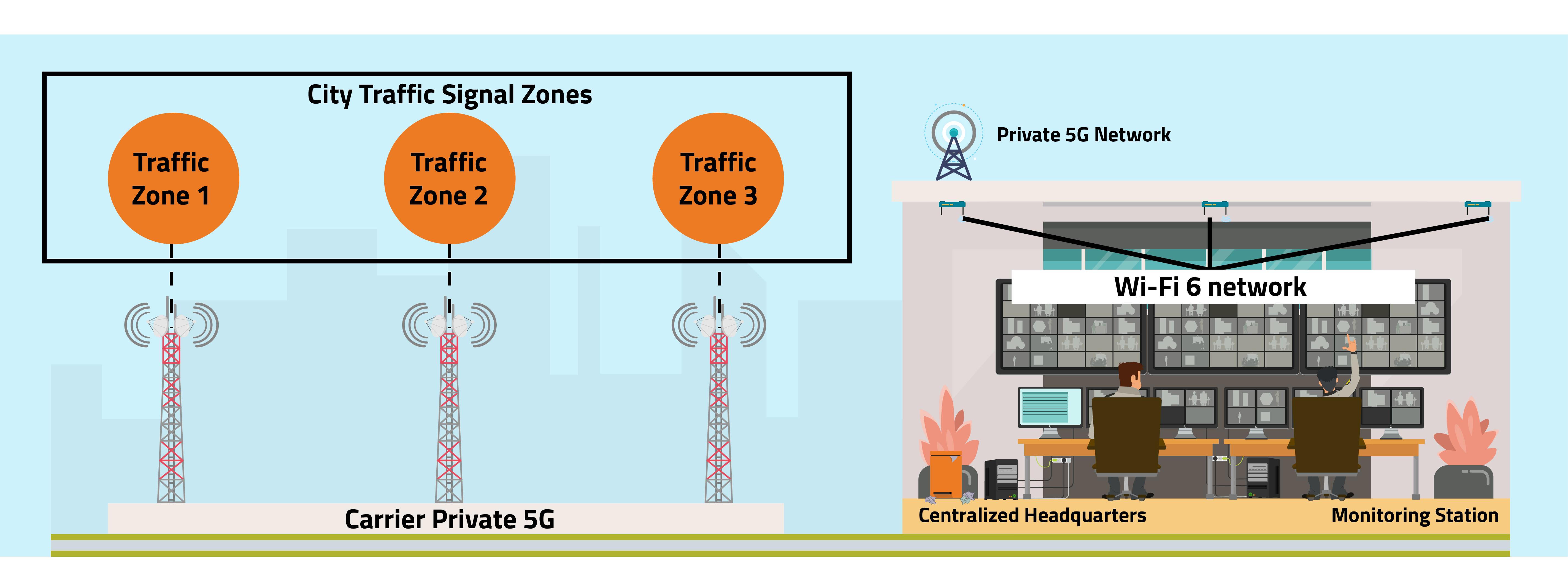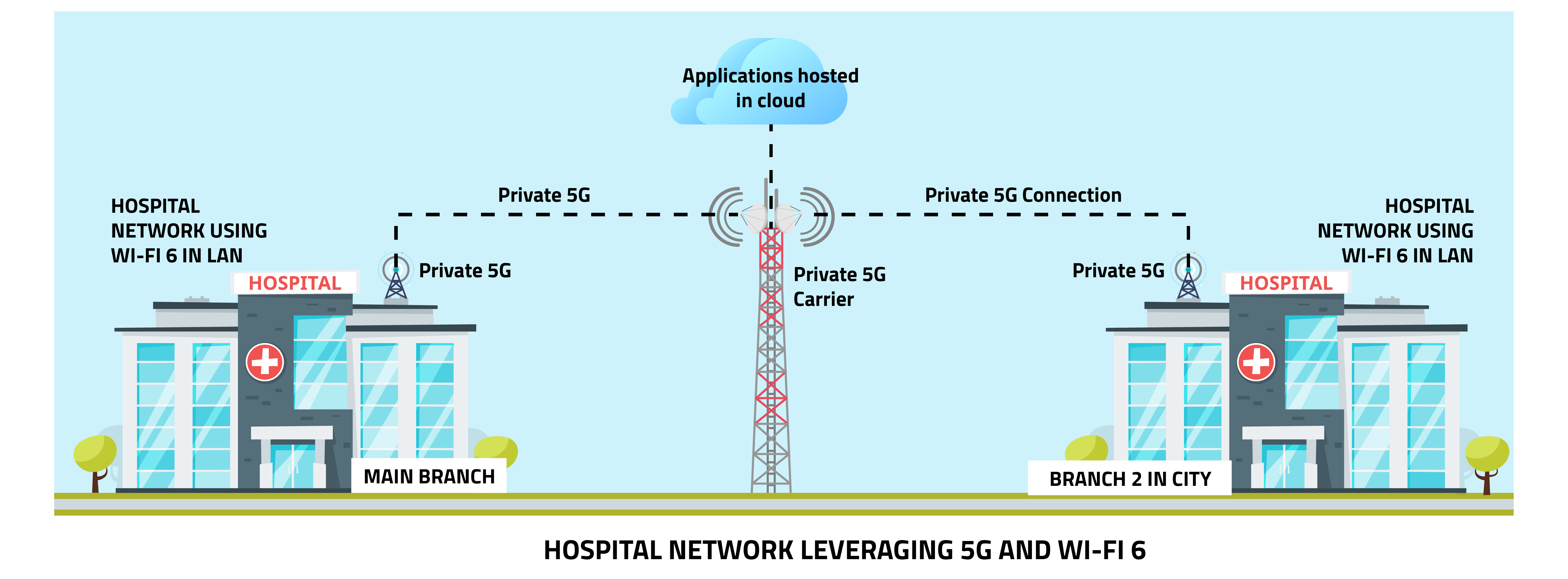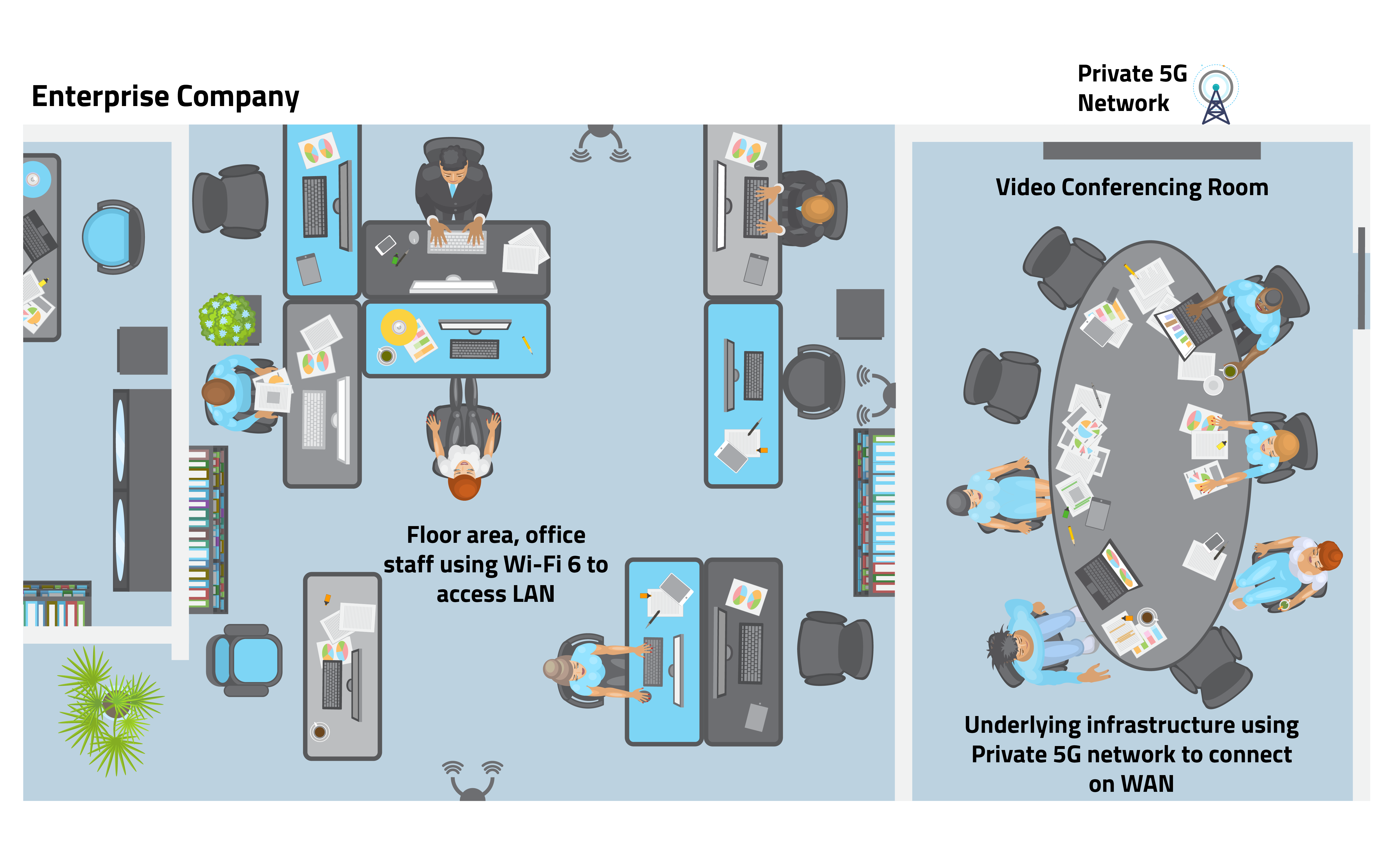With the internet becoming a staple of modern society, its demand has consistently increased. All modern applications have now become more resource-intensive, and most of them are hosted in the cloud. Hence, there is a huge demand for high-speed internet with better bandwidth for both wi-fi and cellular networks. Addressing the demand is equally challenging for both technologies as it needs to consider multiple aspects both in terms of technical and physical structure.
Considering how much we rely on these technologies, we had never witnessed both Wi-Fi and Cellular networks working together The latest generations-5G and WiFi6 can now work as a complementary solution to support dense IoT environments and enable new immersive applications for today’s hybrid work.
Today private 5G provides broadband-level performance and WiFi6/WiFi6E uses features like OFDMA (orthogonal frequency division multiple access), TWT (target wake time) with 2.4Ghz, 5Ghz & 6Ghz frequencies capacity which makes it faster and able to support multiple devices simultaneously.
Let us understand how Private 5G and Wi-Fi 6/ Wi-Fi 6E can go hand in hand in improving technology.
In Private 5G, the modular architecture can interface with any device supporting RAN (Radio access network). So even if the endpoint is not cellular, it will work over RAN which is supported in Wi-fi6 opening new paths for any implementations supported by it. Private 5G provides broadband-level performance and can be used in Industrial deployments along with Wi-Fi6. While Wi-Fi6 may be localized to specific areas, Private 5G can be used for larger environments. Both these complementary technologies can be the key enabler for industry 4.0 where the Private 5G network provides fast reliable, and secure connectivity, while Wi-Fi 6 offers improved performance, better coverage, and increased capacity thus, allowing employees to work more efficiently and effectively.
Some of the use cases of private 5G and Wi-Fi6 as complementary solution:
Real-time monitoring of traffic, smart cities:
Traffic signals and cameras are connected using private 5G to the command center (Centralized Headquarters), which monitors the traffic and controls congestion on the roads by changing the signal timers accordingly. Inside the command center, multiple devices are connected to the Access Points using Wi-Fi 6, which is fast with lower latency.

Healthcare industry, patient monitoring
The healthcare industry network is very critical and requires zero downtime. Patient reports can be available on a centralized server that doctors can use in case of emergencies, surgeries, etc. The server may be in a different location or in the cloud. Hospital LANs can use Wi-Fi6 to connect to compatible endpoints, including computers and other medical devices. Patient monitoring devices should be accessible to doctors in real-time so that required care/treatment is provided on time.
Wi-Fi 6 can help connect wirelessly to the LAN. The building can leverage connectivity using Private 5G which has low latency and high speed, thereby making patient information easily accessible to authorized persons. Such information may be on the main branch or in the cloud.

Manufacturing – Industrial robotics with private 5G enabled
In manufacturing, most of the processes are already automated and faster connectivity is critical in getting real-time data. Robotics and AI require high speed and reliable connectivity. Wi-Fi 6/Wi-Fi 6E plays a vital role in achieving the same.

Enterprise networks where private 5G is used for audio & video while Wi-Fi 6 is for LAN
In an enterprise network, end-users require a highly stable and secure connection to access data and applications that reside in the cloud. A large amount of data gets uploaded and downloaded every second. Critical business calls might be conducted over video conference through different channels. The combination of these technologies enable organizations to have faster , secure and reliable connectivity on the go and also to access the resources needed to get their work done effectively thus increasing productivity and competitiveness.

Enabling remote learning experience for the education industry
Today, the education system has seen a new revolution in the way a student learns and collaborate. AR/VR is the next big thing in education that imparts life to educational concepts and offers engaging, comprehensive and immersive learning experiences. Hence, both 5G and Wi-Fi 6 have great potential to enhance these experiences by providing faster and more reliable connectivity to enable new and innovative learning experiences.
Conclusion:
The 5G revolution is here, and for a business to stay ahead of the curve, it is imperative to combine private 5G and Wi-Fi 6 hybrid network that offers improved speed and performance, increased security, flexibility, and scalability. With this combination, businesses can stay ahead of the competition and ensure that their network meets their specific needs.

is an IT-professional with 15+ years of experience in enterprise networks and security. He is a senior-level consultant with expertise in network assessment, design, build & deployment, service migrations, and L1 to L7 network infrastructure services configuration. At Happiest Minds, he is responsible for client & team Interaction, technical ownership, team handling, and vendor engagements related to network and security assignments. Debabrata has core networking skills in: BGP, EIGRP & OSPF, policy-based routing, quality of service, ACL, route-maps, VTP, STP, VPNs & VRFs, IP SLA, IPSEC VPN, ether channel, GRE tunnels, route-redistribution, NAT, SNMP, IOS upgrade, Nexus vPC, FEX, Tacacs, cloud networking, and has a rich experience in firewalls deployment, security enforcement rules configuration, SSL VPN.







